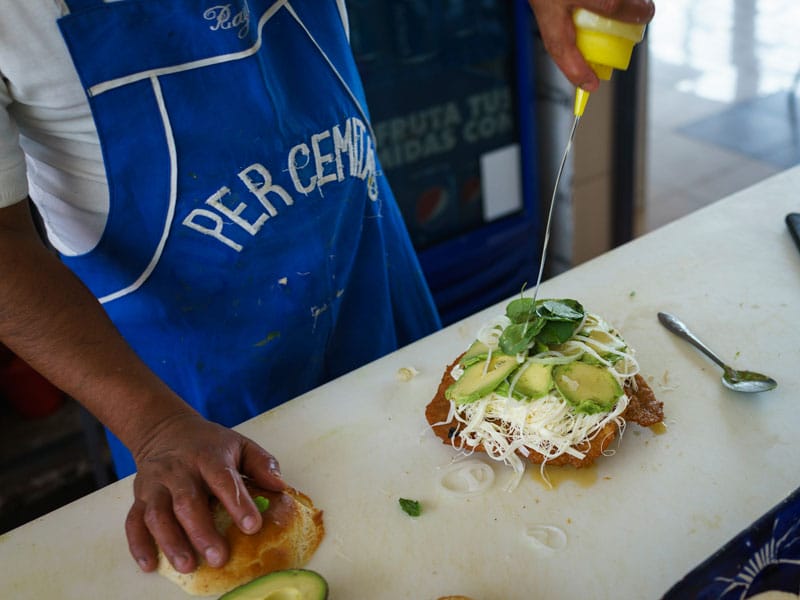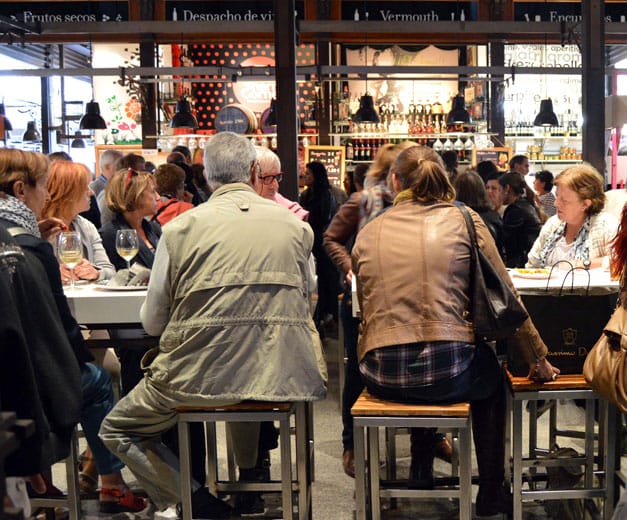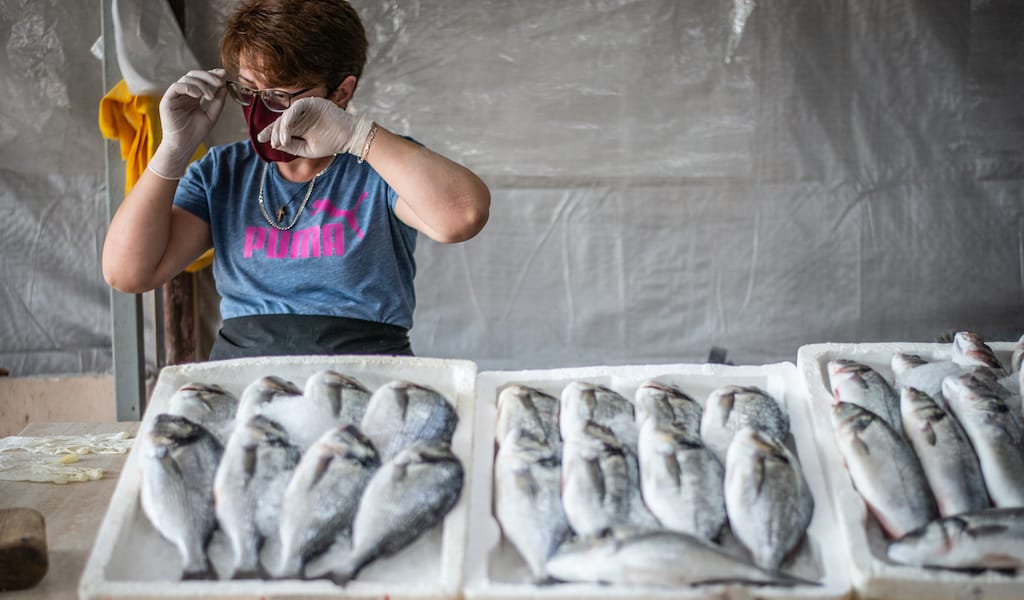The hardest part about dining in Hong Kong is choosing among the overwhelming number of options. It’s one of the most densely populated cities on the planet, with more than 7 million mouths to feed – and many with demanding palates. You can stand on just about any block in the city and find several affordable eateries above, below and across from you (kind of like Starbucks in Seattle).
The latest Michelin guide includes an incredible array of options on the high end, and five restaurants made it on the just-released top 100 “World’s Best” list. The city is also listed as having one of the highest concentrations of restaurants per capita in the world, somewhere between one for every 600 to 1,700 people, with over 40,000 total. Unfortunately, like those of many Chinese cities in a phase of rapid development and transformation, the dai pai dongs, or street stalls, are slowly disappearing. At the same time, many popular stalls in Central have queues that stretch around the block, underscoring the urgent need to save room for these traditional vendors in the urban landscape.
The mind-boggling variety of eateries in Hong Kong makes it virtually impossible to narrow the options down to a list of “top picks,” but we keep returning to a few favorite spots on our countless trips to the bustling city. Eating is the preferred pastime of Hong Kongers, so it’s best to avoid main meal hours, especially on the weekends, when people have even more time to queue for the more famous locations.
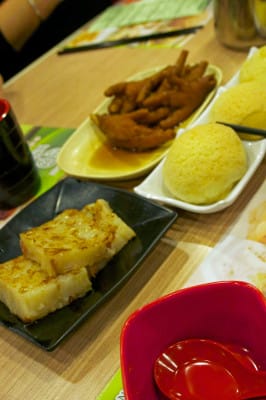 For an introduction to dim sum, Tim Ho Wan is an unbeatable choice. Known as the cheapest Michelin-starred restaurant in the world, the restaurant offers a pared-down menu that focuses on the classics. There is simply no way to sufficiently emphasize how much pleasure we get from eating their cha siu bao, barbecue pork bun. Instead of the fluffy white steamed bun that you get everywhere else, Tim Ho Wan’s version features a short-crust pastry piped on top before baking for a crispy, sweet bun that resembles the island’s other famous treat, the pineapple bun. With the restaurant’s surging popularity since it received its star, several other branches have opened up around town, including in the IFC between the mall and Central MTR station.
For an introduction to dim sum, Tim Ho Wan is an unbeatable choice. Known as the cheapest Michelin-starred restaurant in the world, the restaurant offers a pared-down menu that focuses on the classics. There is simply no way to sufficiently emphasize how much pleasure we get from eating their cha siu bao, barbecue pork bun. Instead of the fluffy white steamed bun that you get everywhere else, Tim Ho Wan’s version features a short-crust pastry piped on top before baking for a crispy, sweet bun that resembles the island’s other famous treat, the pineapple bun. With the restaurant’s surging popularity since it received its star, several other branches have opened up around town, including in the IFC between the mall and Central MTR station.
One Tim Ho Wan branch is located in Sham Shui Po, among the city’s poorest neighborhoods and worth a visit, as it fulfills romantic visions of a bygone kung fu movie era. The city’s top food tour provider, Hong Kong Foodie Tours, takes visitors on an intriguing route through the area, highlighting less common dishes and family-run shops that have been kept alive through the generations. Their Central route features more Hong Kong classics, like unbeatable shrimp wonton noodles and the classic roasted pork found at Lung Kee Restaurant.
Unfortunately, Lung Kee’s charming, slightly run-down location on Gage Street in Central, where there are many other popular lunchtime spots, is in the process of being redeveloped, so it has relocated to a development a few blocks away. Unlike other restaurants that bring in pork roasted in central kitchens, Lung Kee’s is done on-site, and the consideration shows in the tasty, bright-pink, crispy edges. Get an order of cha siu rice, pour on the extra sweet soy sauce and a dollop of ginger scallion sauce and you’ll be dreaming of eating it again in about an hour.
For a bit of a rest and to take in a sip of the British influence that still permeates the island’s food culture, hop over to Le Salon de Thé de Joël Robuchon for afternoon tea. Sure, he’s got three Michelin stars at L’Atelier, just a couple floors up, but this is a much more affordable way to experience the food of a chef considered by many to be the century’s greatest. There is also a popular high tea served on the 103rd floor of the Ritz-Carlton, but we prefer to go to Ozone on the 118th floor for a nighttime-view drink.
If you’re feeling ready for a graduate course in dim sum dining management, head to Lin Heung Tea House. It’s been around since the 1920s, so you’ll find the classic dim sum trolleys making the rounds from the kitchen. This means fierce competition with the rest of the diners, so make like the others and hover at the kitchen exit to get exactly what you want. Shared tables, no concessions to English speakers, and locals lounging and reading the newspaper make this a must for anyone wanting to take part in this disappearing culinary tradition.
There is much more to Hong Kong’s food scene then dim sum (and certainly too much to list exhaustively here), such as delicious iterations of noodles, milk tea, clay pot rice dishes and more, so head over to the Temple Street Night Market to get a taste. Good for culinary browsing and shopping on the Kowloon side, the shabby contrast to Central’s increasing perfectionism is a lovely respite from all those familiar luxury brands.
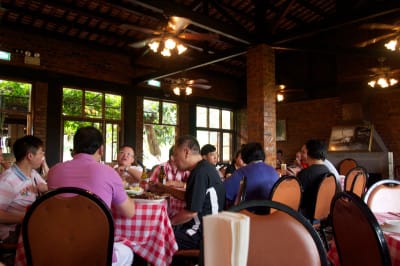 If you’re taking a side trip to Macau (it’s just an hour on the high-speed ferry), skip the easy default choice of eating in the vast casino complexes and head to Fernando’s. Located on the backside of Coloane Island, a popular beach escape for locals, the eatery prepares the best traditional Portuguese fare you’ll find in the city. Open since 1986, it serves a crisp suckling pig that will leaves skeptics in its wake, pork ribs on a bed of fried potatoes, and succulent steamed clams in a garlic-white wine-tomato sauce that is perfect for sopping up with the fluffy bread. Wash it down with a jug of sangria, and you’ll wonder why anyone bothers stuffing money down a slot machine when his could be stuffing his face here.
If you’re taking a side trip to Macau (it’s just an hour on the high-speed ferry), skip the easy default choice of eating in the vast casino complexes and head to Fernando’s. Located on the backside of Coloane Island, a popular beach escape for locals, the eatery prepares the best traditional Portuguese fare you’ll find in the city. Open since 1986, it serves a crisp suckling pig that will leaves skeptics in its wake, pork ribs on a bed of fried potatoes, and succulent steamed clams in a garlic-white wine-tomato sauce that is perfect for sopping up with the fluffy bread. Wash it down with a jug of sangria, and you’ll wonder why anyone bothers stuffing money down a slot machine when his could be stuffing his face here.
(top photo by ©iStock.com/itpow; above photos by UnTour Shanghai)
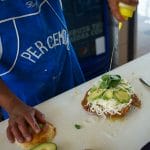 March 10, 2015 CB on the Road
March 10, 2015 CB on the Road
Among the regions of Mexico that are best known for their culinary wealth, Puebla is […] Posted in Mexico City August 4, 2014 CB on the Road
August 4, 2014 CB on the Road
On recent visits to Madrid, we’ve noticed that a new breed of food market has taken hold […] Posted in Barcelona August 30, 2021 CB on the Road
August 30, 2021 CB on the Road
In 2013, Anthony Bourdain and the Parts Unknown team arrived in Batumi, the capital of […] Posted in Tbilisi
Published on May 21, 2014
Related stories
March 10, 2015
Mexico CityAmong the regions of Mexico that are best known for their culinary wealth, Puebla is near the top. Approximately 100 kilometers east of Mexico City, Puebla is the birthplace of chiles en nogada, mole poblano (probably the most recognized Mexican mole worldwide) and cemitas, a knockout sandwich made with the bread of the same name.…
August 4, 2014
BarcelonaOn recent visits to Madrid, we’ve noticed that a new breed of food market has taken hold of the city’s attention. While the traditional kind with food stalls slowly disappears, vibrant, culture-focused gastromarkets are booming. In addition to great food, they offer a mix of businesses, along with cooking demos, live music, exhibitions – the…
August 30, 2021
TbilisiIn 2013, Anthony Bourdain and the Parts Unknown team arrived in Batumi, the capital of Adjara, to shoot the first segment of their Georgian adventure. The show’s producers invited Zamir Gotta, a Russian sidekick unfamiliar with the city, to join him. They visited a casino, strip club and mediocre restaurant for khashi, tripe soup, which…













































